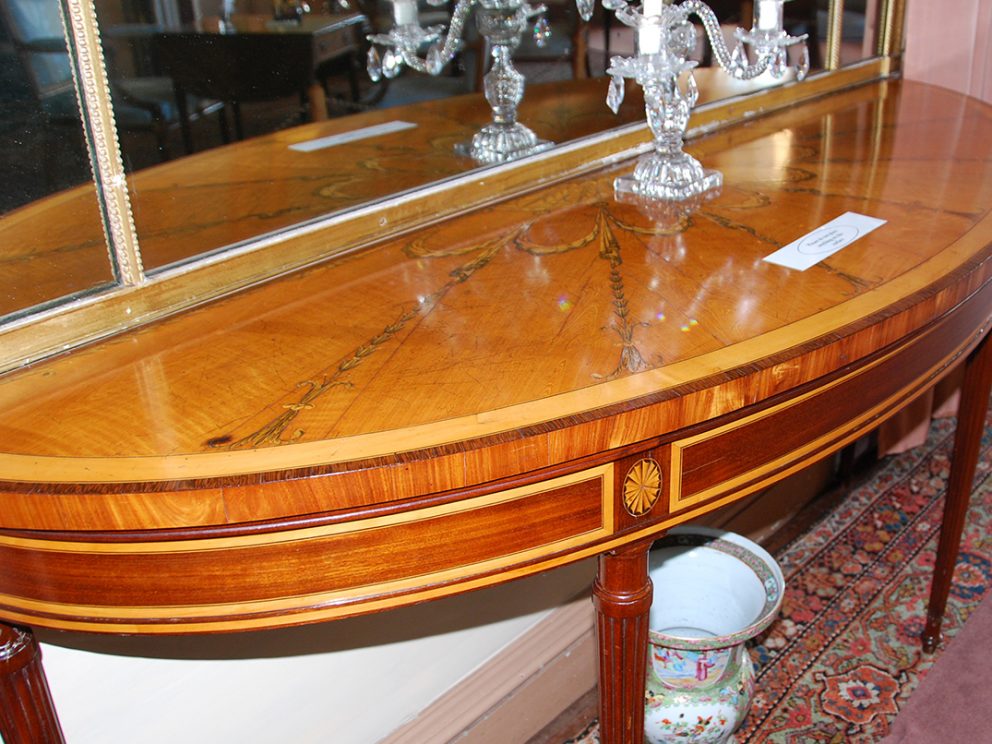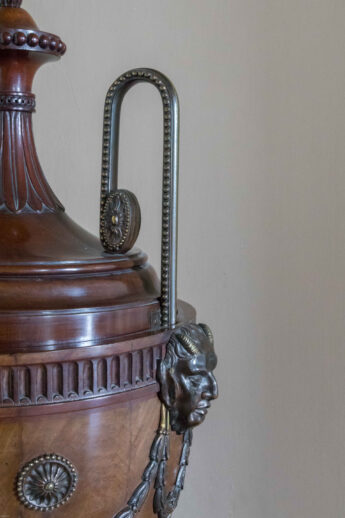Master Furniture Makers

Who is the Best Furniture Maker Ever!
Paxton House has the rare privilege of caring for not one but two outstanding collections of British furniture, one Georgian, one Regency. The names of the makers are generally familiar, Thomas Chippendale (1718-1779) is probably the best-known English cabinet maker of all time, his reputation maintained by his son Thomas (1749–1822), while William Trotter (1772-1833) can perhaps claim the crown as Scotland’s greatest cabinet maker. The furniture they completed for Paxton House is very different but can it help us decide who was the best? Three masterclasses to be held at Paxton this autumn may help us choose a favourite between Chippendale father and son and Trotter.
Understanding the materials

Certainly, the masterclasses, led by furniture historian David Jones and Paxton’s curator Dr Fiona Salvesen Murrell, will reveal the makers’ skill. At Paxton House, Chippendale, Elder and Younger, worked mainly in mahogany from the 1770s to 1791 for Ninian Home, at a time when the finest woods were being imported into Britain from the colonies in the West Indies. The choice of flame mahogany panels and cross graining on pedestals and finials demonstrates an exceptional understanding of woods in both father and son. Trotter’s suites of furniture made for Ninian’s brother, George, around 1814, are mostly in Brazilian rosewood, which shows the crisp details of his carving.
Versatile designers
For versatility, Chippendale must move up the leaderboard. One of the extraordinary aspects of Chippendale’s designs was the ability of the elder Chippendale to develop from early rococo designs to full blown neo-classical by the end of his career, a style continued by his son. At Paxton House, the realatively plain practical furniture designed by Thomas Chippendale senior for bedrooms and offices contrasts with the highly decorative furniture in the Drawing Room designed by Thomas Chippendale junior to fit with neoclassical plasterwork provided by architect Robert Adam. Although William Trotter also worked to Robert Adam designs and employed chinoserie and antiquarian motifs in other interiors, at Paxton his references are primarily neo-classical.
Commercial success

William Trotter, who bought himself a country estate and rose to be Lord Provost of Edinburgh in the 1820s can perhaps claim more commercial success than the Chippendale company. The company Thomas Chippendale the Younger inherited from his father was bankrupt by 1804, although he continued to practice from another address. However, the picture is less clear cut if we put into the balance the senior Thomas Chippendale’s publication of The Gentleman and Cabinet Maker’s Director in 1754. This pattern book of designs had a fundamental impact on the design of furniture throughout Britain and was so widely used as a source book that only collections, like that at Paxton, where all the receipts and records for the furniture contracts have been preserved, can be securely identified as the master’s work. It secured the fame of Thomas Chippendale and his company for two generations and still resonates today.
Who is most famous today?
The continued fame of Thomas Chippendale into the 21st century means that, where his furniture survives, it is often among the most important and visited parts of any historic house collection. Chippendales’ company was prolific. Chippendale expert, Christopher Gilbert, identified over 700 commissions and the Chippendale Society are looking to build a full database of all known commissions. Only two pieces of English furniture sold at auction this century have topped £2million; both were by Chippendale. William Trotter was operating at the height of the Scottish Enlightenment and secured many of the key contracts of the era, refurnishing Holyroodhouse and the Edinburgh Assembly Rooms in preparation for the visit of George IV to the city in 1822. Trotter worked exclusively for Scottish patrons, whereas although Thomas Chippendale’s early career flourished in Scotland, by the time his son Thomas took over, his commissions were nationwide. Today, certified collections of Chippendale furniture survive in many country houses around the country although the collection commissioned for Paxton House is distinctive, so much so that it has been dubbed Chippendale’s ‘Paxton Style’. Much of William Trotter’s furniture was made for the townhouses of Edinburgh gentry and few collections survive intact today, adding to the importance of the furnishings in the Bust Room, Library and Picture Gallery at Paxton House.
So, it seems the three designers have much in common, all working at a time of growing prosperity; all with exceptional understanding of wood; and all producing furniture for Paxton House which has become iconic. All of Paxton’s collections by these makers are Recognised as of national importance. What will the masterclasses reveal and who would you vote the best?
Furniture Masterclasses at Paxton House are to be held on 6th, 7th and 27 September can be booked here